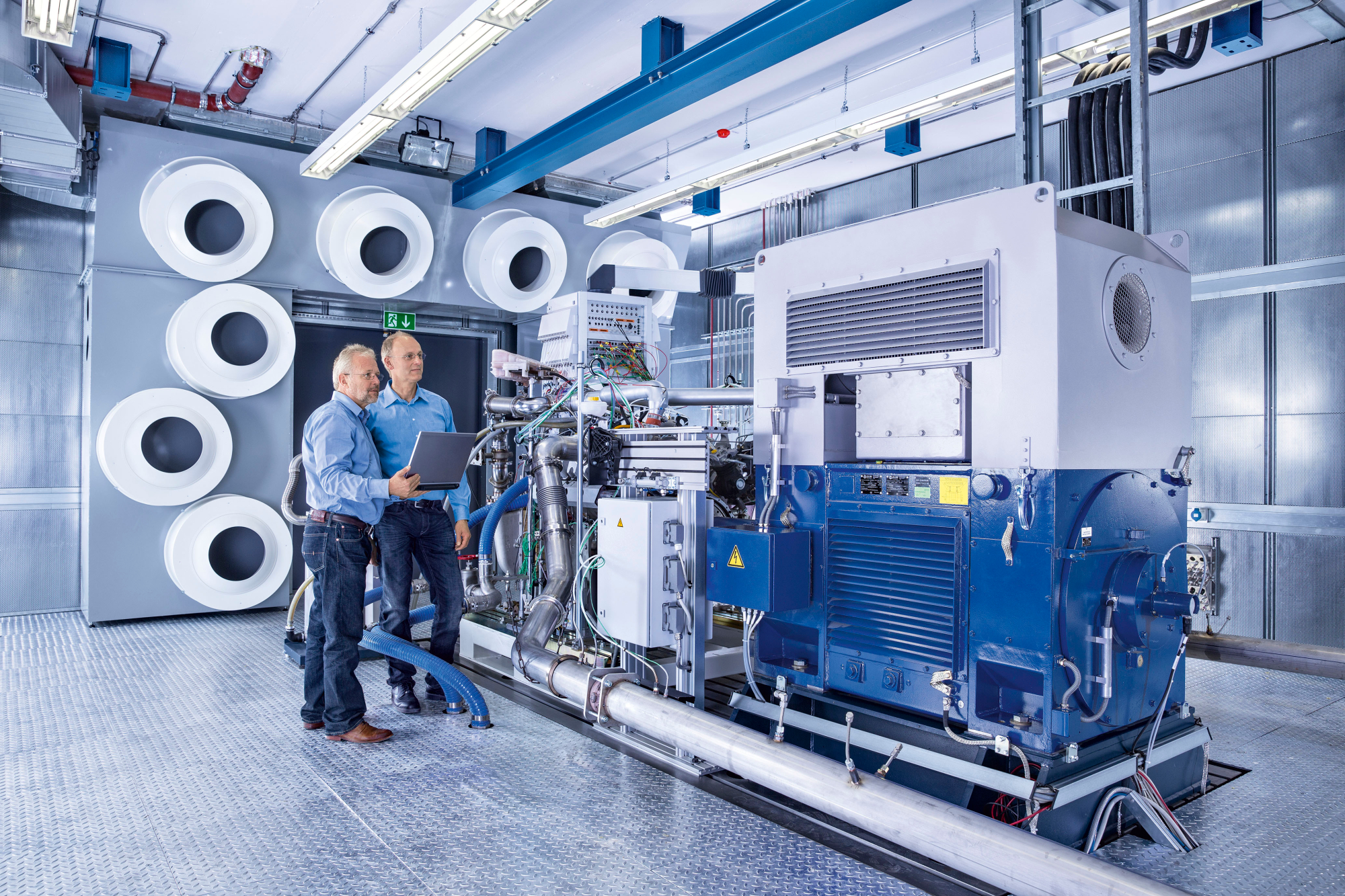
The largest test bench system from IAV
Test bench 13 is the largest system within IAV's wide-ranging testing infrastructure. With an output of 1,470 kW, the electric machine fixes the test specimen (hydrogen combustion engine) at a maximum torque of 7,000 Newton meters and 4,500 revolutions per minute.
Wide range of configuration options
Temperatures from plus 15 to 35 degrees Celsius can be set in the test chamber. Ambient conditions can be simulated as in the open field, for example six degrees cold engine cooling water and four megawatts of cooling energy for the engine. For charge air cooling, IAV uses turbines or water-air coolers.
128 channels for pressure and temperature measurements
In the test setup, the engine is provided with various temperature and pressure measuring points, the latter ranging from minus five bar to plus 15 bar. A total of 128 channels are available for temperature and pressure measurements, and up to 1,250 degrees Celsius can be measured in the exhaust system alone.
Simulation of the entire vehicle
At the same time, IAV always simulates the complete vehicle on the test bench in accordance with the requirements of the engine to be tested and with the integration of any control units. With the help of an application system, for example from Inca, IAV experts can modify data and measure the engine's response.
Hydrogen supply
The test bench is supplied with hydrogen via a separate line. A maximum of 40 kg of gaseous hydrogen can be burned in the engine per hour. The system is currently in a second construction phase, after which a test specimen will be supplied with a maximum pressure of 90 bar (currently 30 bar) at the end of 2021 and will be able to burn 100 kg of hydrogen per hour.
"We are setting new standards for the development of heavy commercial vehicles!"
Peter Bahr
